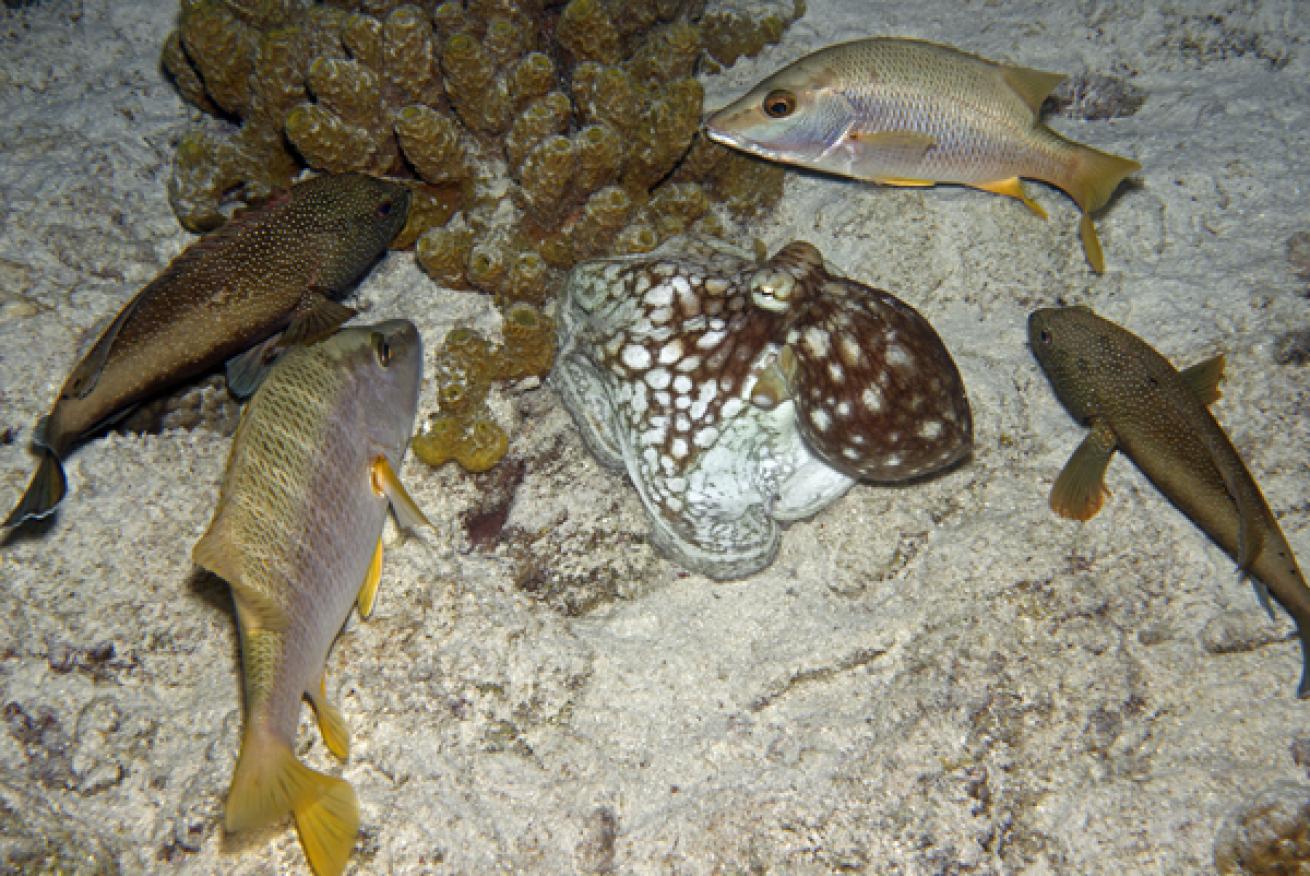Critter Hunt: Caribbean Octopus

Common Octopus, Octopus vulgaris
Test test test
Ned and Anna DeLoach
With their boneless body and high intelligence, octopuses are masters at home invasion. Twice a day, the Caribbean’s common octopus, Octopus vulgaris, slips out of its den and goes on the prowl, using long, flexible arms to dig mollusks from the sand or flush crustaceans from hiding holes. Never ones to miss a trick, several predatory species have learned to follow the eight-arm wrecking crew with the hope of an easy meal. The opportunistic feeding strategy — known as nuclear hunting — is more frequently associated with foraging eels, but for sheer entertainment, a plundering octopus and its hungry entourage can’t be beat.
Last summer, Anna and I spent several afternoons following an octopus and its escort of small grouper and snapper around a shallow patch reef. As long as we remained several body lengths away from the action, the group — which at times consisted of a dozen or more — went about its business as usual. However, if approached too closely, the octopus hunkered down and the fish scattered.
Although the common octopus characteristically prefers a diet of mollusks, this fine fellow was after crustaceans, repeatedly casting a net of arms over a section of reef, and then directing prey into its deadly web with probing arm tips. Those crabs and shrimps able to avoid the octopus trap by making a break through an opening instantly fell victim to waiting fish mouths. It wasn’t obvious what, if anything, the octopus got out of the association, but its cagey confederacy of followers made out like bandits.

Ned and Anna DeLoachTest test test
With their boneless body and high intelligence, octopuses are masters at home invasion. Twice a day, the Caribbean’s common octopus, Octopus vulgaris, slips out of its den and goes on the prowl, using long, flexible arms to dig mollusks from the sand or flush crustaceans from hiding holes. Never ones to miss a trick, several predatory species have learned to follow the eight-arm wrecking crew with the hope of an easy meal. The opportunistic feeding strategy — known as nuclear hunting — is more frequently associated with foraging eels, but for sheer entertainment, a plundering octopus and its hungry entourage can’t be beat.
Last summer, Anna and I spent several afternoons following an octopus and its escort of small grouper and snapper around a shallow patch reef. As long as we remained several body lengths away from the action, the group — which at times consisted of a dozen or more — went about its business as usual. However, if approached too closely, the octopus hunkered down and the fish scattered.
Although the common octopus characteristically prefers a diet of mollusks, this fine fellow was after crustaceans, repeatedly casting a net of arms over a section of reef, and then directing prey into its deadly web with probing arm tips. Those crabs and shrimps able to avoid the octopus trap by making a break through an opening instantly fell victim to waiting fish mouths. It wasn’t obvious what, if anything, the octopus got out of the association, but its cagey confederacy of followers made out like bandits.










